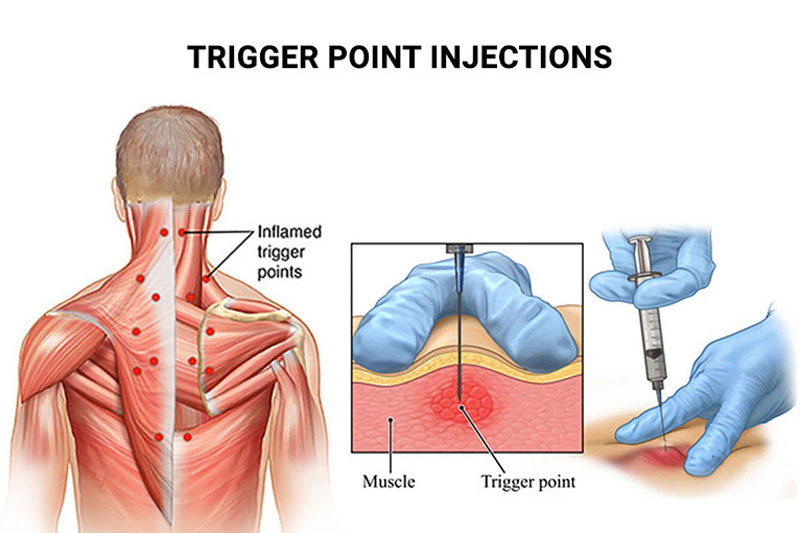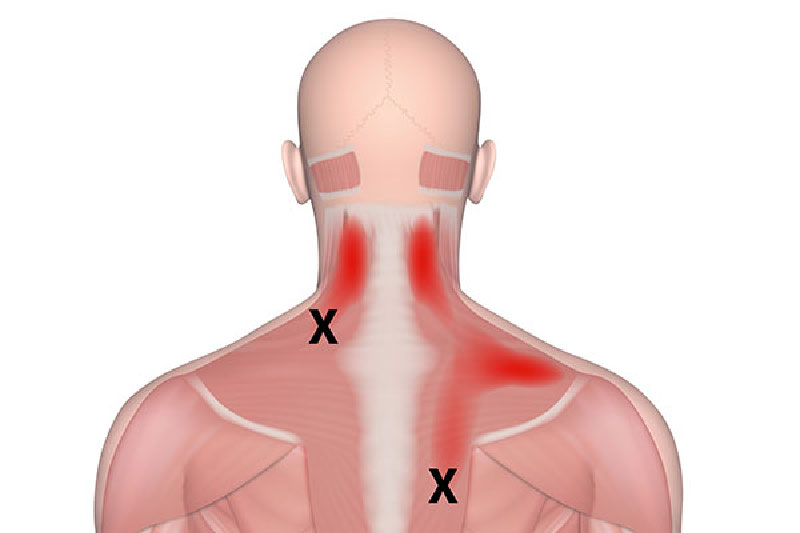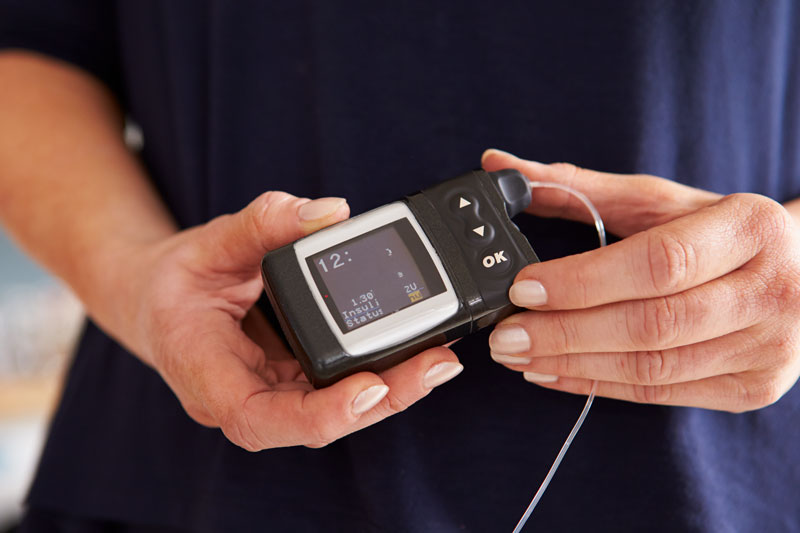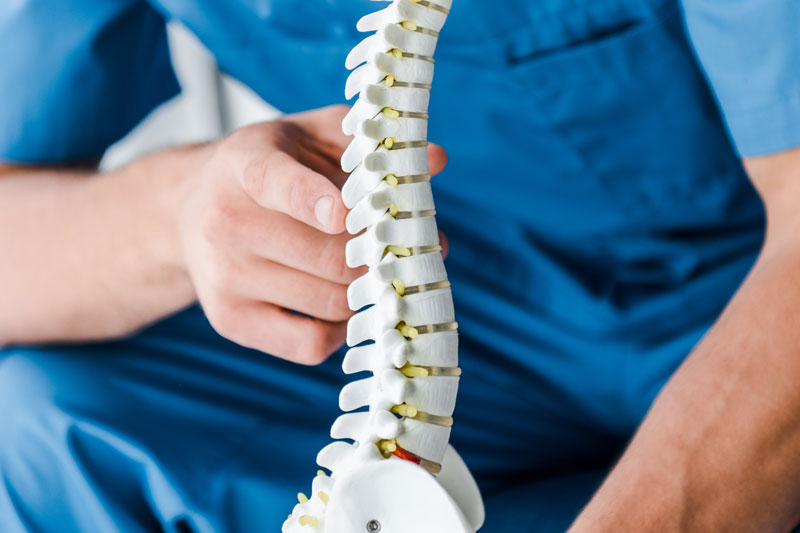What are trigger points?
What Causes trigger points?

Symptoms of trigger points
Trigger points can manifest with a range of symptoms that can vary depending on their location and severity. One common symptom is the presence of localized pain or discomfort in the affected muscle. This pain is often described as a deep ache or a constant dull sensation that may worsen with movement or pressure. The pain caused by trigger points can be persistent or intermittent, and it may be felt at the site of the trigger point or referred to other areas of the body. For example, a trigger point in the neck muscles could cause pain that radiates to the head, causing headaches.
In addition to pain, trigger points can lead to other symptoms such as muscle stiffness or tightness. The affected muscle may feel tense, and it may be challenging to move or stretch it fully. This can result in reduced flexibility and limited range of motion. Trigger points can also cause muscle weakness, making it difficult to perform certain activities or maintain proper posture. Some individuals may experience associated symptoms like fatigue, disturbed sleep patterns, or changes in autonomic functions, such as increased sweating or changes in skin temperature. Identifying and addressing trigger points can help alleviate these symptoms and improve overall well-being.

Treatment Options for trigger points
Treatment options for trigger points aim to alleviate pain, reduce muscle tension, and restore normal muscle function. One common approach is manual therapy, which involves applying pressure to the trigger point to release the tension and encourage muscle relaxation. Techniques such as trigger point massage, myofascial release, or deep tissue massage can help break up the tight muscle fibers and improve blood flow to the affected area. Stretching exercises and gentle range-of-motion movements may also be recommended to promote flexibility and relieve muscle stiffness.
Another treatment option for trigger points is the use of injections. Trigger point injections involve injecting a local anesthetic or a mixture of anesthetic and steroid directly into the trigger point. This helps to numb the area and reduce inflammation, providing temporary pain relief and relaxation of the muscle. In some cases, dry needling may be used, which involves inserting a thin needle into the trigger point without injecting any medication. This stimulates the muscle and can help release the tension and promote healing.
Additionally, lifestyle modifications can play a role in managing trigger points. This may include stress reduction techniques, improving posture, regular exercise to strengthen muscles, and maintaining a balanced diet. Heat or cold therapy, such as applying heat packs or ice packs to the affected area, can also provide temporary relief.
Frequently Asked Questions about trigger points
What are trigger point injections?
Trigger point injections are a treatment technique in which a healthcare professional injects a local anesthetic or a mixture of anesthetic and steroid directly into a trigger point. This helps relax the muscle, reduce inflammation, and alleviate pain associated with the trigger point.
How are trigger point injections performed?
Trigger point injections are typically performed in a doctor’s office or a clinic setting. Before the injection, the doctor may apply a numbing cream or spray to the skin to minimize discomfort. The healthcare professional then inserts a small needle into the trigger point and administers the medication. The injection process usually takes only a few minutes.
Are trigger point injections painful?
While everyone’s pain tolerance may vary, trigger point injections are generally well-tolerated and only cause minimal discomfort. The initial insertion of the needle may feel like a quick pinch or sting, but it is typically brief. The healthcare professional will work to make the procedure as comfortable as possible.
What can I expect after a trigger point injection?
After the injection, you may experience some soreness or mild bruising at the injection site. This is normal and usually resolves within a few days. You may also notice an immediate reduction in pain or relief that develops gradually over the next few days. It’s important to follow any post-injection instructions provided by your healthcare professional for optimal recovery.
How many trigger point injections do I need?
The number of trigger point injections needed can vary depending on the individual’s condition and response to treatment. Some people may find significant relief after a single injection, while others may require a series of injections spaced over a period of time. Your healthcare professional will assess your progress and determine the appropriate treatment plan tailored to your specific needs.
Are there any risks or side effects associated with trigger point injections?
Trigger point injections are generally safe; however, like any medical procedure, there are potential risks. Common side effects include temporary soreness at the injection site, bruising, or a small risk of infection. Rarely, allergic reactions or nerve damage may occur. It’s important to discuss any concerns or pre-existing conditions with your healthcare professional prior to the procedure.
Can trigger point injections be used for all types of pain?
Trigger point injections are primarily used for pain caused by trigger points in muscles. They are commonly used to address musculoskeletal pain, such as tension headaches, fibromyalgia, myofascial pain syndrome, and certain types of chronic pain. However, the suitability of trigger point injections for your specific pain condition can be determined by a healthcare professional after a thorough evaluation.
Are there alternatives to trigger point injections?
Yes, there are alternative treatments for managing trigger points and associated pain. These may include manual therapies like trigger point massage, physical therapy exercises, stretching techniques, or the use of heat and cold therapy. Each individual’s treatment plan should be personalized based on their condition and preferences, so it’s best to consult with a healthcare professional to explore the most appropriate options.









